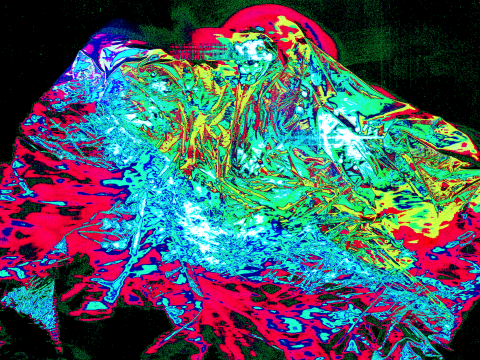
This experiment was titled Industry 4, the fourth draft of a video that used sources with themes on industry and consumption. The visual effects in this video were created using the Optical Flow effect. Typically, Optical Flow is used to analyze movement from pixel to pixel between frames in order to generate data that can be used for other effects, such as particle systems. Instead of using this effect to generate data, I used it for the visual effect alone, which is not its intended purpose. By overdriving the effect, It creates excellent noise around motion in video. This is one of my favorite effects in touchdesigner, I plan to use it for conference, so it was great to practice this type of work for this assignment. 
Optical Flow translates movement into data that appears as red or green imagery. After running through Optical Flow, I fed these videos into a channel mixer in order to create color variety between the clips. I used audio reactive sequencing from a song clip based off of low frequencies in order to determine the switching between video sources. I had 3 major clips that were quickly cycled, and one fourth channel that was constantly switching between an additional 4 clips. The 3 major clips never changed, and were chosen to be consistent because I thought they produced the most visual tone for the project.
These three clips are a video of an amazon freight train at a road crossing, a, unfolded 360º video of a warehouse, and finally a video of the Hulett ore unloaders in Cleveland. The fourth input slot continuously swapped between a source pool including a video of driving, SpongeBob, a recreation of Kubrick’s 2001’s Stargate scene, and the Crab Rave music video by Noisestorm. The intention of constantly switching between so many source videos was to create difficulty in deciphering any one specific video and to keep visual interest changing. Despite quick swapping, the three main videos set a continuous theme for the video, and the viewer can slowly understand them as the video continues.

